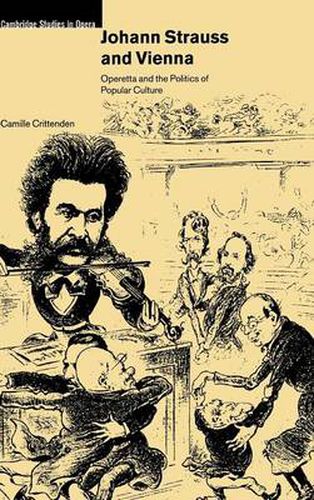Readings Newsletter
Become a Readings Member to make your shopping experience even easier.
Sign in or sign up for free!
You’re not far away from qualifying for FREE standard shipping within Australia
You’ve qualified for FREE standard shipping within Australia
The cart is loading…






Vienna has always been the jewel in the crown of the Habsburg monarchy, the seat of imperial power as well as the economic engine upon which the empire turned. The end of the nineteenth century saw historic changes in both the city’s political infrastructure and its outward countenance. This urban transformation was accompanied by the development of a new and lasting musical genre, Viennese operetta. No composer was better suited than Johann Strauss to express his native city’s pride and anxiety during this period. This book provides an overview of the inception and development of Viennese operetta, then takes Strauss’s works as a series of case studies in the interaction between stage works and their audience. It also includes a consideration of Strauss’s role as national icon during his lifetime and throughout the twentieth century. The book contains fascinating illustrations from the period as well as synopses of key operettas.
$9.00 standard shipping within Australia
FREE standard shipping within Australia for orders over $100.00
Express & International shipping calculated at checkout
Vienna has always been the jewel in the crown of the Habsburg monarchy, the seat of imperial power as well as the economic engine upon which the empire turned. The end of the nineteenth century saw historic changes in both the city’s political infrastructure and its outward countenance. This urban transformation was accompanied by the development of a new and lasting musical genre, Viennese operetta. No composer was better suited than Johann Strauss to express his native city’s pride and anxiety during this period. This book provides an overview of the inception and development of Viennese operetta, then takes Strauss’s works as a series of case studies in the interaction between stage works and their audience. It also includes a consideration of Strauss’s role as national icon during his lifetime and throughout the twentieth century. The book contains fascinating illustrations from the period as well as synopses of key operettas.